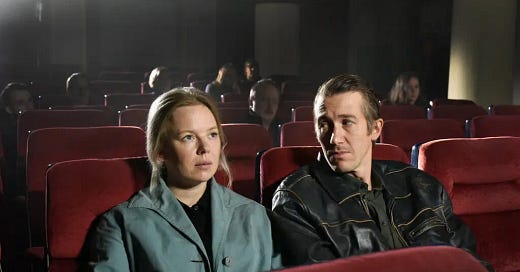The Hopeless Romantics of Aki Kaurismäki's Finland
Aki Kaurismäki’s movies remind us that, while time has moved on, people and their conditions have not changed as much as we would’ve hoped.
My immediate reaction to Aki Kaurismäki’s cute and bitter drama Fallen Leaves was to recall Jean Renoir’s famous quote claiming that “a director makes only one movie in his life. Then he breaks it into pieces and makes it again.” Kaurismäki has, by and large, told the same story in different arrangements throughout his four-decade career. That’s both a feather in the cap of one of the most remarkable and consistently illuminating filmmakers of the last 40 years and a complete indictment of the social, economic, and political contexts that inform his work. If, in the span of 30-plus years, Shadows in Paradise, Ariel, The Match Factory Girl, Drifting Clouds, Lights in the Dusk, and Fallen Leaves could be made with such consistent feelings of loss, fear, hope, and love — and all in the same melancholic atmosphere that envelops their near-interchangeable characters — then it says that the material conditions of Kaurismäki’s characters, which are reflections of our own, have by and large remained under the boot, with few ways to salvation.
Kaurismäki’s ‘Proletariat Trilogy’ consists of his films Shadows in Paradise, Ariel, and The Match Factory Girl, but working-class struggles are embedded into the fabric of his worldview as an auteur. His romances are both constantly put in peril by the tensions of labor issues and capitalist exploitation and an escape from those burdens. It’s in the bars, the apartments, the stoops, and the streets where Kaurismäki’s protagonists look desperately to get away from it all. The director’s framing of these spaces is best seen through his lighting technique, which is theatrical, impressionistic, and sets up multiple points of interest with spotlights on his characters at nearly all times. The eclectic color palettes and eye-catching prop designs — from furniture to drinks — also highlight a contrast with the often sordid displays of the characters’ work environments.
Keep reading with a 7-day free trial
Subscribe to Film Daze to keep reading this post and get 7 days of free access to the full post archives.




